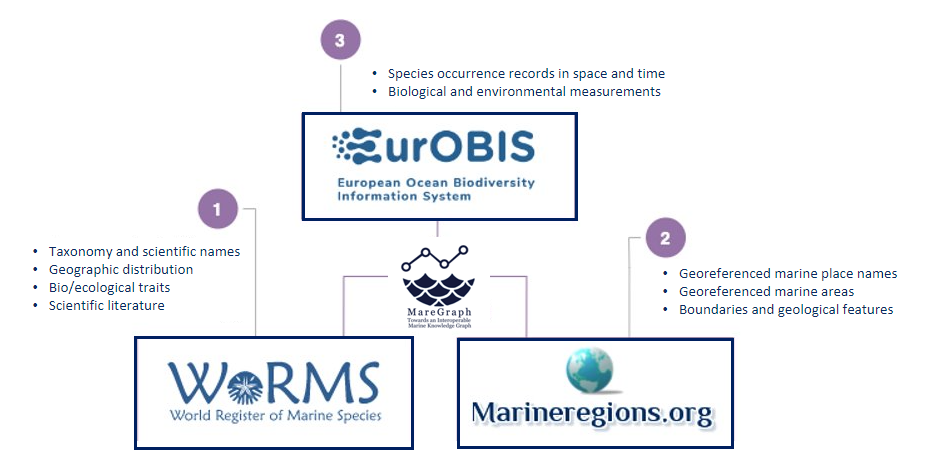About
With MAREGRAPH, we aim at supporting the EU and its Member States in the achievement of ambitious marine-themed objectives by semantically enriching, interlinking and providing high value and foundational datasets. These currently power the “effective biodiversity and conservation knowledge products” of today and will enable building the knowledge products of the future, where knowledge graphs and AI closely interact to support the marine public sector in making and building open knowledge on marine biodiversity. The MAREGRAPH project will provide an open linked data production and publication of three high impact datasets in the marine domain (the World Register of Marine Species (WoRMS), Marine Regions and EurOBIS (the European Node of the international Ocean Biodiversity Information System) using state of the art technologies. This will allow the onboarding of essential marine datasets in the Common European Data Spaces. As such MAREGRAPH will provide a structural component in the digital transition of the marine landscape.
Goal
The objective of DIGITAL-2022-CLOUD-AI-02 is to increase the easy availability, quality, and usability of public sector information in compliance with the requirements of the Open Data Directive, in order to boost the re-use and combination of open public data across the EU for the development of information products and services, including AI applications.
The MAREGRAPH project will increase the semantic, technical, and legal interoperability of three selected datasets:
- a taxonomic dataset World Register of Marine Species - WoRMS
- a geospatial dataset Marine Regions
- a biogeographic dataset EurOBIS
Focus
- HVDs available via APIs in a machine-readable format.
- Lead to the creation of data products and services by the participants in the common European data spaces.
- SMEs, start-ups, as well as public organizations to use cross-EU data to scale up and offer EU-wide services.
- Facilitate machine learning based on public data, especially in data-demanding areas such as climate change, pollution, or weather predictions.

Charter
Please see our OSLO-Charter for more information.
Possible Use Cases
Data integration and types of data:
- Help users integrate data about distributions, occurrences, and functional traits of marine species;
- Aggregate data described with different units of measurement;
- Combine biotic and abiotic data information;
Data modeling and mappings:
- The ability to query graphs using semantics that users are used to (e.g., generic semantic conventions like schema.org or research-focused standards like DCAT);
- To be able to follow translation pathways between different taxonomic reference systems in order to compare / cross-reference datasets (e.g., NCBI, WoRMS, etc.).
Wider research opportunities:
- A link between climate change and species migration;
- Publish to external systems such as GEONAMES from Marine regions;
- Synchronize an externally managed species list automatically into WoRMS (i.e., FishBase, AlgaeBase).
Architecture and Protocols:
- VOCBENCH domain / subject vocabulary tool for small communities;
- To be able to aggregate data coming from different sources, methods, and protocols.
Related networks and initiatives
Public Sector Open Data for AI and Open Data Platform
- DIGITAL EUROPE framework – DG CNECT
- Call: DIGITAL-2022-CLOUD-AI-02
- Topic: OPEN-AI – Public Sector Open Data for AI and Open Data Platform

